We’re wrapping up our coverage of this year’s New York Comic Con event today with our interview with several members of the Star Trek: Section 31 cast, ahead of the streaming movie’s January 24 debut.
TrekCore joined director Olatunde Osunsanmi, actors Kacey Rohl, Omari Hardwick, and Rob Kazinsky in a discussion with several other outlets to talk about the themes of the Michelle Yeoh-led production, bringing darker elements into the optimistic Star Trek future, and more.
This interview has been edited for length and clarity.
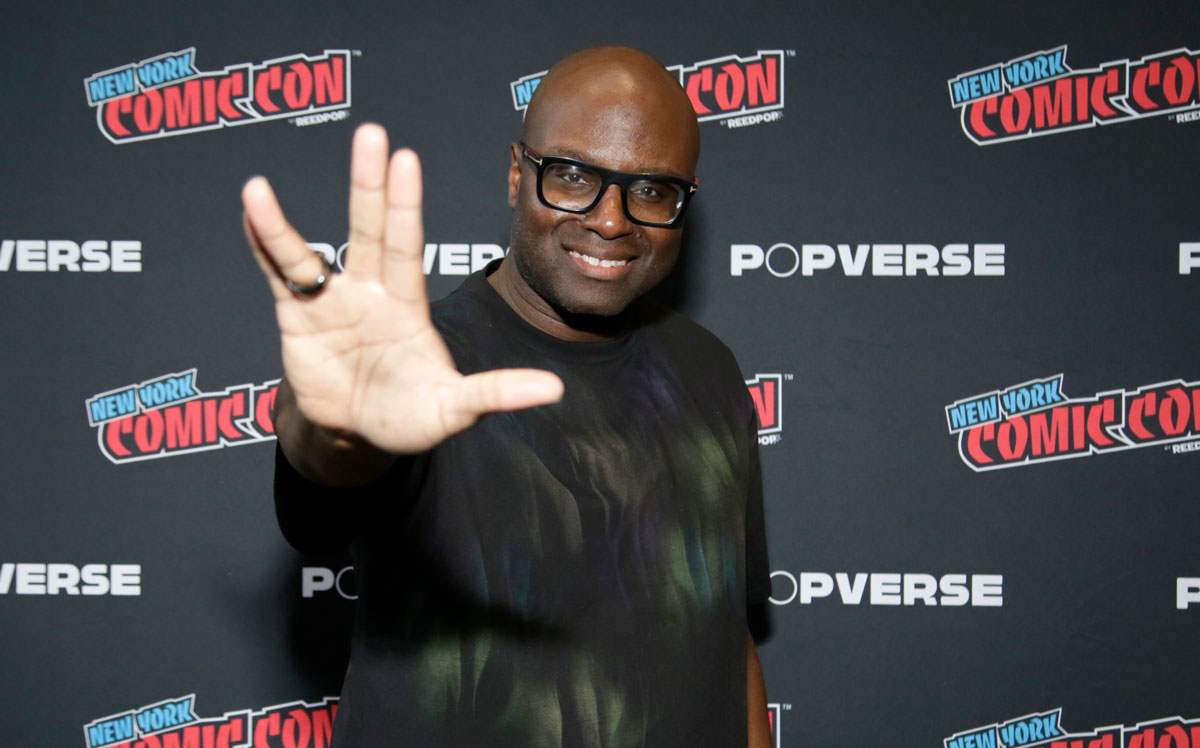
Q: For those who haven’t been following the project, how would you describe Star Trek: Section 31?
OLATUNDE OSUNSANMI (Director): Section 31 is an action-adventure Star Trek movie that follows a group who is like the CIA of Starfleet — and follows a bunch of operatives at the edge of the galaxy, outside of Federation space, where Starfleet’s not supposed to go. They’re joined by Michelle Yeoh, reprising her character Philippa Georgiou from Star Trek: Discovery, and they get up to a bunch of shenanigans.
It’s wild, it’s fun, it’s a joy, and it’s inspirational.
Q: Will there still be any of the traditional Star Trek ‘morality play’ storytelling in the movie?
OSUNSANMI: This is what I love about science fiction and fantasy-adventure, it’s allegorical. We get to talk about things that are usually very difficult to talk about in real life — we get to talk about them in very exciting ways, and very graphic ways. For me, one of the major themes of Section 31 is: everyone has to atone for what they’ve done in the past, and along with that, everyone is capable of change. Everyone is capable of transforming themselves and being better, if they dedicate the time to doing so.
I think that really resonates right now, and it’s a really important message to tell. There’s also the Star Trek thing, too, which is just aspiring to be good, to be better. This movie does tell that story.
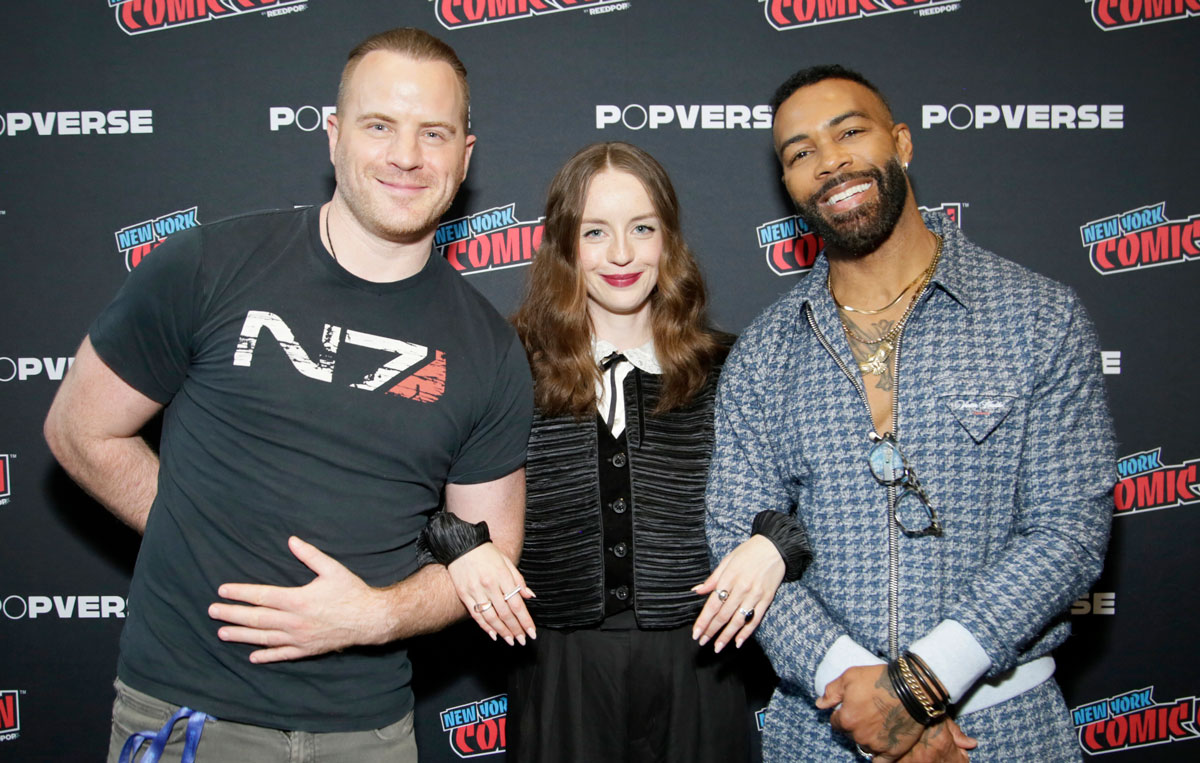
Q: Could you tell us about your characters — and if you looked to any other Star Trek characters for inspiration your roles?
OMARI HARDWICK (Alok Sahar): I’m going to let Rob go first, he was our Star Trek connoisseur.
ROB KAZINSKY (Zeph): Yeah, that’s me, I was the annoying guy! [laughs] Well, Section 31 is set in the Lost Era, right? It’s set before The Next Generation, before so many characters came into the franchise — but I would say every one of our characters has a little bit of Q in them. They’re all mischievous, they’re all there to be anarchists, they’re all outside the Federation system… all just slightly to the left, not following the rules.
There’s that anarchic type of element to them, but they’re all very unique. It’s such a deviation from what traditional Trek is, an irreverent and inherently non-Trek style that we’re bringing in, and in a few years there may be future Trek actors who refer to what Michelle Yeoh and Omari do with their characters. I don’t think you’ve seen anything like this in Trek before.
HARDWICK: My character is maybe a bit more frayed, but Alok is very much like his name — he’s the most locked amongst the motley crew of thieves. And when I say “thieves,” I mean that in the sense that we are stealing some of the rigmarole, the standard of what “had to be done.” We break all those rules and barriers, but Alok is the bridge that still has to be crossed to get to the places we’re trying to go.
And I don’t think that I find it that different than what “old” Star Trek was trying to do. To Rob’s point, it’s the manner in which we’re getting there — that’s the part that’s different. And Alok really does maintain himself as that bridge – you have to walk a bit more standard across him, but the others get to do whatever they want to do, which means they have a bit more fun. [laughs]
It’s a little annoying, but I start to rake myself across the coals a bit — and with Zeph, I’m able to help put out some fires in a very fun way, which afforded us some time for improvisation.
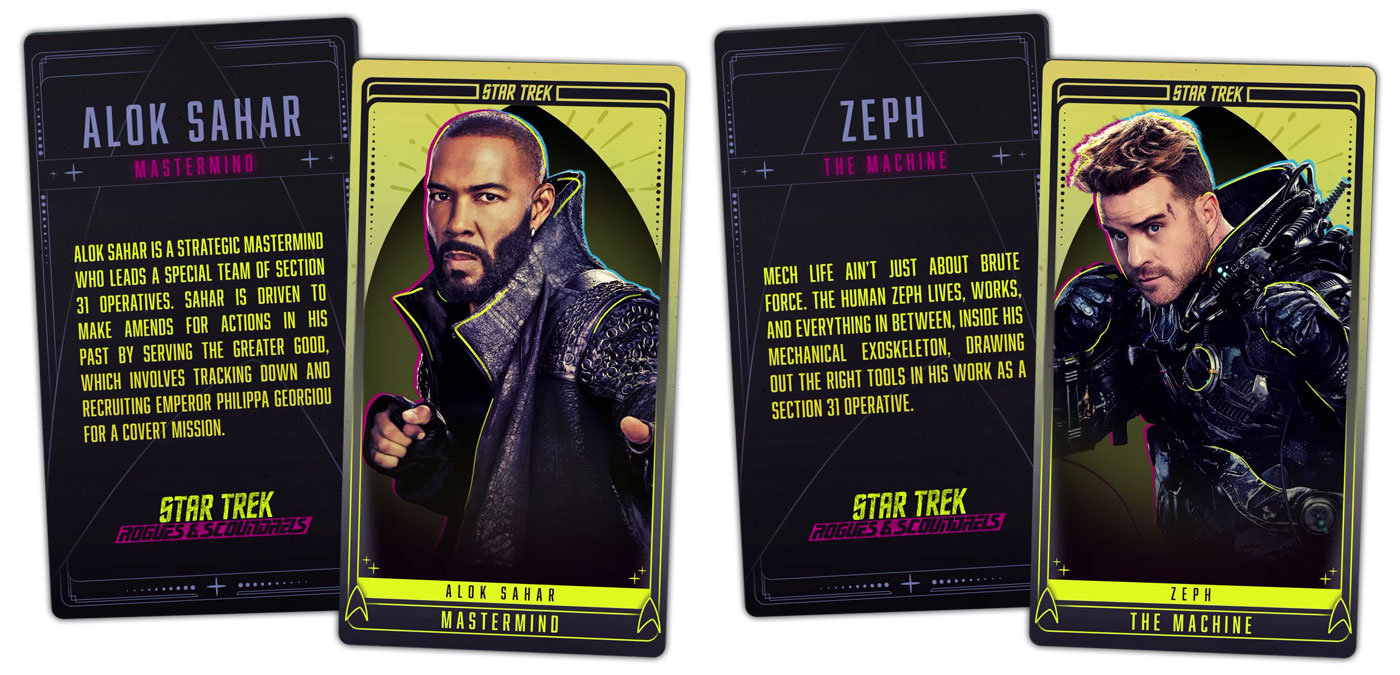
KAZINSKY: They always had three cameras running at all times; something you never really had with Trek before. We were improvising all the time, sometimes whole scenes. I think we added like 18 pages of dialogue that they had to cut through in editing. We were having too much fun!
HARDWICK: And because he’s the biggest Trekkie in the cast, we still had those conversations about making the movie for the fandom — because the fanbase is the biggest part of this whole thing. So we’d improv, and that helped us get loose and understand our characters a bit more, but at the end of it all you still have to stay within the confines of what fans may want to watch — because this movie is really different from what’s been seen prior.
Q: Kacey, what was your approach to taking on the one character already established, Rachel Garrett from “Yesterday’s Enterprise”?
KACEY ROHL (Rachel Garrett): I watched that episode a bunch, and thought Tricia O’Neil did such a beautiful job with it. At one point, I attempted — really, copying what she did — and that didn’t feel like it was right. There wasn’t enough flow to it for our process. But I watched the episode many times, even when we were shooting, and trusted that would enter into what I call ‘the soup’ of Rachel Garrett, along with a lot of guidance from Olatunde.
OSUNSANMI: Kacey brought a lot of gifts; I think fans are really going to love her as Rachel Garrett.
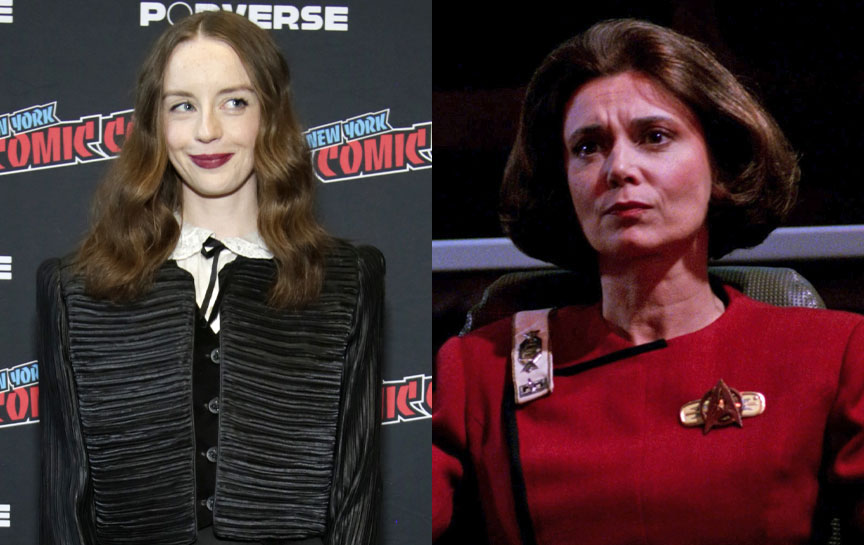
Q: How difficult was it to balance the darker themes of Section 31 with the generally optimistic setting of the Star Trek future?
OSUNSANMI: Well, I think it’s intimidating, because you’re trying not to touch the third rail — I grew up when Next Gen and DS9 were airing, and they were so wonderful — but we didn’t want to make a movie where people would feel sad at the end. We want you to be uplifted about life, the way I felt watching Trek growing up.
It was interesting to thread the needle on that — there’s a lot of drama in the movie, for sure, but there’s a lot of fun and action and joy. So on a difficulty scale of one to ten — with a ten being, like, redoing the first Trek pilot – I’d say Section 31 was about an eight.
KAZINSKY: This question is kind of at the core of what Section 31 is about, because a lot of Star Trek fans – including myself! – hate the fact that Section 31, the organization, exists. Because we’ve all bought into the optimistic future that Roddenberry designed, and the idea that this kind of group wouldn’t be needed anymore.
But the truth is that Sisko quote: “It’s easy to be a saint in paradise.” For me, that’s been the motto and creed of this whole production – because of what we in Section 31 do, you’re able to have that Federation. Should Section 31 exist in the first place… I think that’s just an enlargement of the universe.
We’ve all been shown the Roddenberry-esque future. But if you’re going to have this, realistically, it would always have something like Section 31 – and the dirty work of people like us allows the rest of Starfleet to be so sophisticated.
HARDWICK: To me, what I loved about Roddenberry’s idea for the future is that it was about morality. When we draw that line in the sand, what side of that line do you want to be on? Whatever you believe in, there are always people who are good, and people who are bad – and sometimes good people can do bad things, and those bad people can do some good.
So I adore Section 31 – because you need some crew to say, “No way, that shit ain’t right!” And maybe they do it in a way that’s pretty rogue, but I appreciate the flexibility in how they do it.
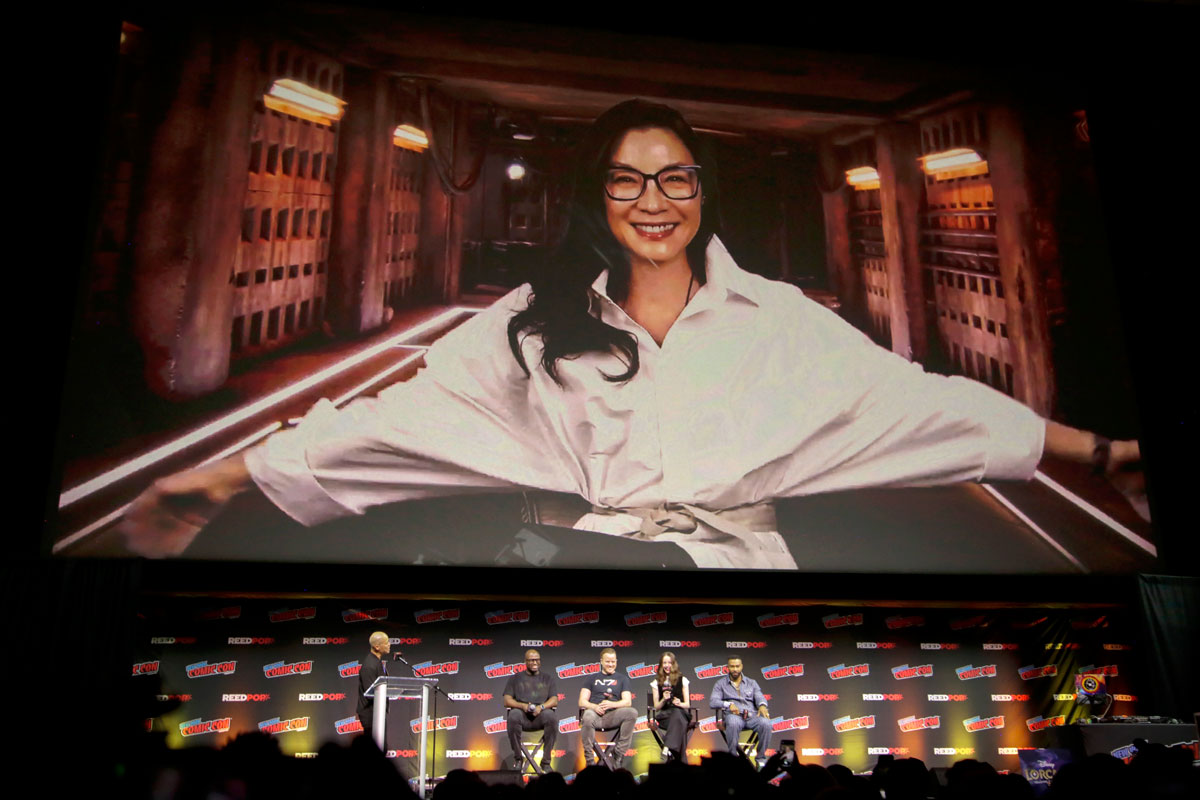
Q: When you have a character like Georgiou — sometimes a villain, sometimes an anti-hero, sometimes just kicking ass — how do you maintain the tone through a film like this?
OSUNSANMI: The wonderful thing about being a director is that I’ve got this wonderful thing… called the script! [laughs] It’s a roadmap that I get to follow — and true, you put a different director in place and it would be a different movie — but we do a massive amount of script analysis. You have to track each character through, reading only their scenes individually.
I’m very digital. I’ll read through a script on paper over the weekend, because I think you process it differently, but then I use this wonderful app called Scriptation with all these color codes. Baby blue is performance, grey is for shots, yellow is for props, green is prosthetics… and then there’s the script layer on top of the page, which is: What’s going on with this particular character? It would be like 500 pages long if I had to print out all of my notations. [laughs]
With Georgiou, I of course have the benefit of having worked with Michelle for years on Discovery, building that relationship. I sat down with her and mapped it out, we spent about six or seven hours together every day for three weeks — she came to Toronto just for that and then left again, well before we shot the movie.
I follow her instincts, which are amazing; no one knows the character better than she does. That’s my guide — and there’s some version of that with each character throughout the movie. Then of course, there’s the Alex Kurtzman factor as well, he’ll say “Don’t forget this, we have to watch for that, don’t fall into a trap,” that kind of thing. It’s a real team effort.
Q: And Kacey, Georgiou is basically the opposite of Rachael Garrett, right? How was it when the two of you shared scenes?
ROHL: Being an opposite to Georgiou created some really awesome friction, which is always very fun. Michelle is so game to just play, so there’s a lot of goodness that can happen. She’s so giving as an actress; she pulls all sorts of things out of me. It was a lot of fun to wrestle with how those two people can be together.
And I witnessed the relationship that Olatunde has with Michelle; it’s very beautiful. Just full of love and kindness, it’s really nice to see.
Q: Star Trek has brought a lot of representation from different groups, from the Original Series to the modern shows. Do you remember the first time you felt represented in media, whether it be in a Star Trek character or other production?
OSUNSANMI: My earliest memory of that is Geordi La Forge. I definitely felt represented by him. I grew up in Orange County in California — I went to a private school, but then went to public school where I was like the first black kid a lot of other kids around me saw. I asked my dad why those kids were surprised to see me. Once he began to explain race to me, and I remember being driven home from school thinking, “Oh, I’m different.” I was five or six years old, and it threw me for a loop, recognizing you’re being treated differently — not by everybody, but by certain people — and you start to feel a little alone.
What was wonderful about watching Star Trek — in particularly, TNG — was that it didn’t matter who you were, they were all accepted on the same team. Commander Riker just talked to Geordi like he was a smart, awesome human being. That meant a lot to me, and I knew that I wanted to be in that kind of world. I want the world to be that.
Flash forward to now, when I actually get to talk to Commander Riker! [laughs] He’s even cooler as a human being than he was on the show… it’s mindblowing! I love Jonathan Frakes to death.
Q: Did you have an “Oh wow, I’m on Star Trek!” moment during filming?
ROHL: It had to be the moment I stepped onto our mission ship, that was a wildly overwhelming experience. I was just, like, immediately in outer space. Then, when I started having fittings with our amazing costume designer Gersha Phillips, everything came together in a different way. She built me this amazing jacket… everybody wanted it! [laughs]
OSUNSANMI: It’s a great question, because my favorite part of these Star Trek shows is watching the cast walk onto set of the first time — it lets me relive the time I got to walk onto set for the first time, you know? It’s tough, because I’m there for all of the design phase, when the lumber is brought in… I like to wait until it’s all complete. Whether it’s the cast, the crew, background actors, or a visitor to set… that moment makes it real for them.
ROHL: The mission ship was my first experience with it, but truly, each new set I walked on gave me another wave of like, “Oh my gosh!” I was just knocked on my butt by the details.
![]()
We’ll have more on the upcoming Star Trek: Section 31 movie as January approaches!

